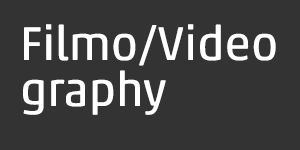Personal
An Essay on Colander, Łukasz Guzek
Energy vs form, the war between postmodernism and modernism, Łukasz Guzek
Every epoch has its key words and slogans, which help to understand and describe it. "The form" was such a key phrase for modernism although it became apparent only later. Contemporary, post-modernistic art theory postulates the use of several new words, one of them being "energy".
The word "energy" has entered the idiolects of many contemporary artists and art critics. Yet, its presence in the cultural discourse is not a modern invention. Today´s meaning of the word and contexts in which it is used call for explanation. Józef Robakowski willingly uses this word too. Undoubtedly, this word is vital to his art as well as to all phenomena known collectively as "actual art".
In his show at the QQ Gallery, Józef Robakowski aimed to present his energy art theory. The presentation had two elements, a screening and a performance, which were to illustrate the lecture. After a series of operations performed by the alchemist-magician-shaman, an energy substance was created from various substances mixed together in many vessels in strange shapes. Everybody could taste it: it resembled alcohol. During the projection Robakowski showed his own films, both old ones, from the seventies, and new ones as well as films by other artists. All of them were referred to as "energy films".
Józef Robakowski´s main spheres of activity are photography and film. He is also an expert on Russian constructivism. Hence come the roots of his conception of art energy. "Energy" was also a key notion in understanding Malevich´s theory of painting, according to which a particular painting is an energy screen. The artist charges the painting with his own creative power, which later radiates towards the viewer. In the early twentieth century the picture-screen association probably resulted from the experiments in cinematography. The film belonged to new media and artists were fascinated with the new possibilities. Seeking novelties was modernism's basic postulate. That is why avant-garde artists often made use of film techniques. At that time, films had a different function and position. There was no show business and the film was still art. As we watch Vertov´s films, the difference between the film of those times and the showbiz productions of today becomes apparent. Cinema performed the same function as video art does now; it offered a possibility of individual creation and could be a means of personal expression. Nowadays the film, unlike painting, has lost this character of an auctorial and personal expression. Its production demands a great number of people whose intentions and interests may be contradictory.
Video art is different. Its message is always individualised. "Video-Me", the title of Józef Robakowski´s presentation in the QQ Gallery, is significant. Yet, video art has its pitfalls. Films are usually watched on a TV screen and therefore they become just another message attacking us from the screen. Moreover, video is widely available for home use, thus losing its charisma, or, as Walter Benjamin would put it, its aura and becoming banal. We can argue that easy access to paints and simple cameras is not harmful to painting and photography. Yet, referring to the genealogy of aura, we can say that painting, no matter how stupid, borrows from the myths of high culture and the romantic perception of the avant-garde artist who "feels more". Photography takes its noble character from the very same myth, while video, with its roots in cinematography, is of plebeian origin. What is more, it has lost its position of an experiment. The age of modernistic avant-garde movements is over. A video film has become a natural language of contemporary art and it is a popular means of expression.
Nevertheless, video´s universality and the fact that it lacks "the aura" can turn out to be an advantage, especially as the art- related phenomena and culture change. In contemporary post-modernistic culture, the traditional hierarchy of values has been set in motion. "The low" and "the high" have commingled; the boundary lines between genres have become unclear; intellectual stands have weakened; a dialogue is more valuable than a statement. Nobody watches the purity of genres, but on the contrary new crosses are looked for. This seems to be a new abiding feature of our reality; pursuit the absolute as well as all kinds of finalism have been rejected and it is the human condition rather than the divine that serves as the model of the world. Therefore, video and media-based art constitute an ideal instrument for expressing such a picture of the world and the human being. They are pop-media and as such they can operate directly in a social space open to everybody. Space, no longer understood as a modernistic abstract, but as an existential space is a source and destination of this message. Pop-media are permeated with human reality because such is their nature.
A video artist always speaks of the human being and contemporary world because both him and the media belong to this world. We can expect that unrestricted access to digital technology (digital television linked with a computer terminal) will offer more opportunities of generating and emitting a picture. These new possibilities will produce a huge pop-space and a great amount of participants creating their own messages. On the other hand, it will be possible to enjoy an individualised multimedia message situated in a common space of meaning and co- perception of the world and human being. Against all apocalyptic complaints, the more technology around us, the easier it is for an individual to announce himself to a community of others.
Józef Robakowski´s use of the word "energy" is a contemporary one. It reveals an important fact, namely, that there has been a shift in stress as far as the discourse on art is concerned. In modernism it was an abstract perfection, some kind of art existing for art´s sake and detached from reality that was valued most. "Energy" suggests that there is another link in the communication chain. There is someone/something that energy is transmitted to to stimulate activity. In performance, the main stress is on the dynamic character of changes, not on a static character of formal elements of a picture.
The word "energy" is the best one to describe all the characteristic features of post-modernistic culture and art. However, there has been an important change in the meaning of the word. "Energy" emphasises the importance of the non-material extrarational factor. The word was widely used in modernism too. At that time, however, energy was viewed as a causative force giving birth to the form understood in both abstract and concrete sense. The whole dynamic effort of the humanity was aimed at creating world´s new shape, represented, for example, in art. This was the functional context in which energy was mentioned from Futurism to the Counter-culture of the Sixties. Nowadays energy itself is a value. The dynamics of the system and the reality´s changeability constitute values. The contemporary world has assumed a shape of energy. The results of its influence and their final forms are less important since they continually undergo changes. This, by the way, is their most characteristic and widely expected feature. It is believed that lability is a vivifying force that protects from the evils of totalitarianism, fundamentalism, integrism, nationalism, racism, sexism and all kinds of intolerance. It should be remembered that modernistic avant-gardes were extremely totalitarian in expressing their views on art. Historically, they appeared at the same time as the great dictators, totalitarian systems and world wars.
This is how Józef Robakowski´s theory of energy art makes the film experiments of Russian constructivism and Malevich´s theory of image meet video art and media-based art. It seems rather plausible that the theories that emerged at the beginning of our century should find their continuation and fulfilment in contemporary art. The modernistic idea can be dragged behind modernism and find its extension in post-modernistic art. It is not my intention here to praise the sagacious genius of Russian constructivists. Their ideas find a continuation in art due to the fact that Robakowski explores the features of art based on electronic media and places the ideas in the post-modernistic way of thinking about the world and culture. For this he needs art forms as well as his awareness of art history. The latter lets him discover the sources of his art and its general context. In this way the energy art theory validates contemporary art.
translation: Katarzyna Buczak







